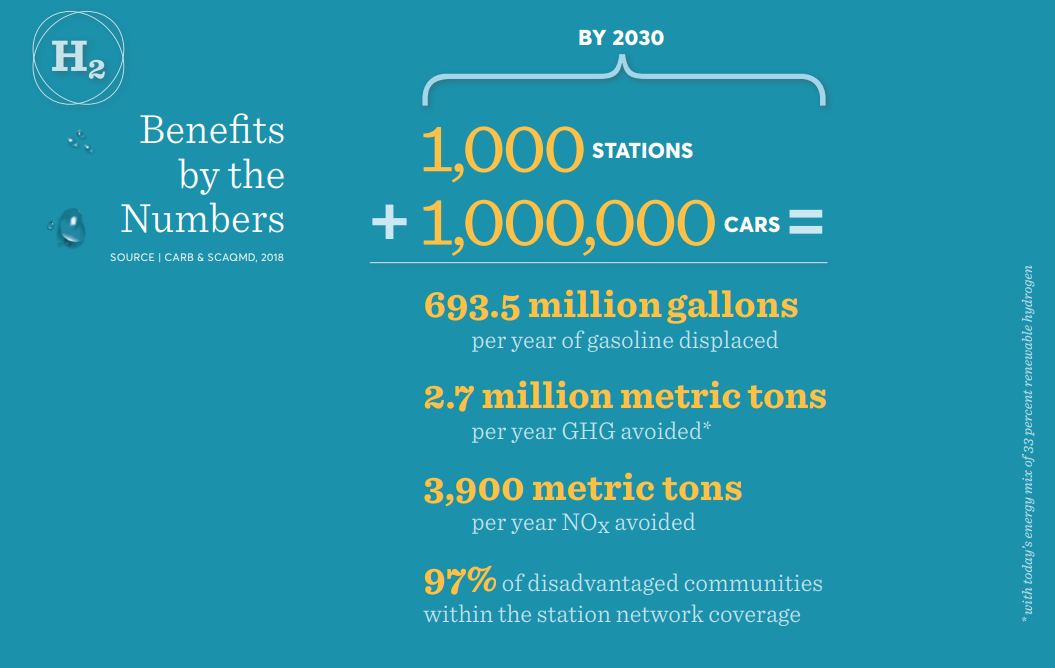Last August, the California Fuel Cell Partnership released its 2030 vision for California, The California Fuel Cell Revolution. The vision document described a shared vision of our members.
- A self-sustaining, private investment-led marketplace, enabling a ramping down and eventual exit from government subsidies
- Desirable, cost-competitive fuel cell vehicle and hydrogen products
- 100% decarbonized hydrogen for mobility
-
1,000 hydrogen stations enabling upwards of 1,000,000 fuel cell electric vehicles (cars, buses, trucks)
California has shown success with fuel cell electric vehicles, including passenger vehicles and buses. We have 7,000 passenger cars on the road—more than anywhere else in the world—and 20 years and 4 million miles of operational experience with fuel cell electric buses. In the near future, we expect to see even greater progress with fuel cell electric trucks.
With this early success, now is the time to act and create a fully self-sustaining commercial market. The California Fuel Cell Revolution points us in the right direction and sets the stage for further efforts.
The Revolution has served as the foundation for additional strategy documents, reports and activities to enable, establish, and expand the market. For example, one of the successful policy initiatives that came out of this process was the zero-emission infrastructure credit in the Low Carbon Fuel Standard (LCFS).
The LCFS credit and other initiatives that will emerge from the Revolution process will help guide California stakeholders—private industry and government working together—to achieve a vision of fuel cell electric cars, buses and trucks utilizing decarbonized hydrogen.

As we culminate our 20th year of service to California, we view our work in producing the Revolution and implementing it to be one of our signature efforts since the establishment of CaFCP in 1999.
In the coming year, CaFCP members, government and private industry, will be working to accelerate early market successes and lay the groundwork for achieving our 2030 vision.
- Reach the 100-station milestone
- Secure the co-funding needed to reach the 200-station goal set forth in the governor’s executive order
- Actively plan for 1,000 hydrogen stations enabling upwards of 1,000,000 fuel cell electric vehicles described in the Revolution
- Establish a cost-competitive and resilient hydrogen supply chain as an integral part of a successful self-sustaining marketplace
- Develop a systematic approach for 100% decarbonized hydrogen by 2030, leveraging the larger renewable energy transition already underway